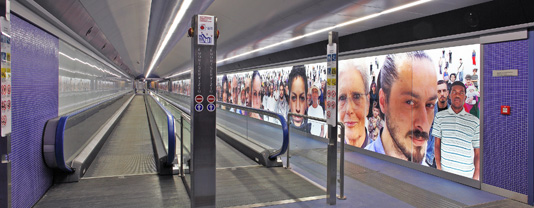If it is true, as has been maintained on many occasions by countless analysts, that Africa is the market of the future as regards the railway world, Railway Engineering cannot fail to let its readers know what is going on there.
This time we travelled to the countries of North Africa, and in particular those looking onto theMediterraneanwhere, in spite of the political instability that has certainly slowed down the process, a policy of strong investment has been pursued over recent years to respond to the growing demand for rail transport.
Algeria, Morocco, Tunisia, Libya, Egypt and Sudan: the projects now going on in these countries are diverse and often involve considerable financial outlays; they range from the creation of high speed lines to designing tramway and metropolitan systems in the main cities, right down to restoring old lines and renewing the rolling stock. You’ll find this and lots more in the “Focus On” section inside.
As always, there’ll be a look at Italy as a bearer of excellence in the field of railway engineering: in the interview with the engineer Giancarlo Bono, author of university texts and designer of the Italian slab-track system, we’ll tell you all about superstructures, both traditional and innovative, with a particular focus on the highly interesting applications he’s found not only in the field of railways, but also of tramways and metropolitan networks.
And it’s to the urban transport sector that we dedicate, as we normally do, the “Special” section, this time turning our attention to the South of Italy and to one city in particular,Naples. Because of its very unusual geographical conformation and considerable density of population,Napleshas had to equip itself – and it continues to do so – with a complex and articulated urban transport network: a heavy metropolitan line (Line 1), a light metro line still in the process of completion (Line 6) and four funicular railways.
We interviewed Alberto Ramaglia, Sole Administrator, and Vincenzo Orazzo, Operations Manager of Metronapoli SpA, the Naples Municipality company that manages this network. This time, however, as well as the usual technical, operational and logistical aspects, we wanted to widen our scope of interest and talk about a unique project of its kind “Le stazioni dell’Arte” (“Stations of Art”), which aims to make transport areas more attractive: with artistic coordination by Achille Bonito Oliva, the interior and exterior spaces of the stations have been adorned with over 180 works by 90 of the most prestigious contemporary artists, to comprise one of the most interesting examples of a decentralized museum spread over the entire urban area.
